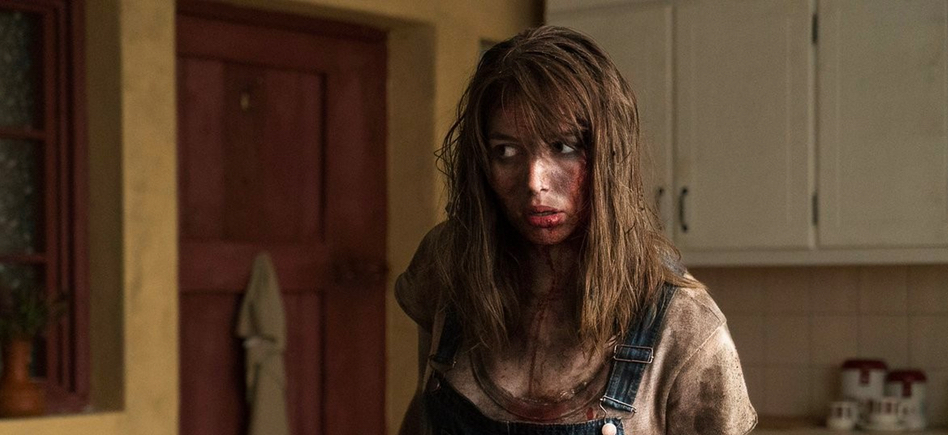There’s nothing better, to my eternally horror-one-track-minded head, than finding those movies that crawl under your skin and stay there. And The Hole in the Ground, brought to life Lee Cronin in his directorial debut, is the kind of horror that sticks with you. Spoilers ahead, of course.
Following the story of Sarah, a young Irish woman fleeing from an implied abusive relationship with her young son, the titular hole in the ground is one that gapes in the forest just behind her and her son’s new home: after Sarah’s son, Chris, has an encounter with the hole, Sarah is convinced that something insurmountable has changed in her child, and that it’s her duty as his mother to uncover it.
The Hole in the Ground explores more than just the actions that leave someone with trauma – in fact, it’s really coy about showing anything at all of the actual abuse, which I thoroughly appreciated, not just because it credits the audience with enough wit to piece together the story without having it spelled out for them, but because it allows the movie to focus on more abstract horrors. The true horror is what follows – trying to rebuild a life pursued by the monsters you want to believe, functionally, you have left in your past.
Horror movies about parenthood, especially single motherhood, are practically a genre unto themselves, but I think The Hole in the Ground uses the notion of two people being poured into one – the child – to fascinating effect. A superb performance from Seana Kerslake, as the woman apparently fleeing an abusive partner, brings to life this painful idea – that, though she has escaped the physical presence of her abuser, that he may live on in the child they had together. James Quinn Markey as the child question finds impressive nuance in the two versions of himself that his mother interprets, both the one that his mother views as an extension of her, and the other that she sees as a terrifying reflection of her abusive partner.
And that’s achieved and explored through a rejection of standard jump scares and musical cues and a reliance on a more grinding sense of dread – the superb sound design creates this constant feeling of earth and flesh being torn apart, and the distant rural setting lends a feeling of lonely isolation to the movie as a whole. The intense relationship between mother and son is at the centre of this deeply disturbing movie, but the world that Cronin builds around it – filled with urban legends, freshly-dug earth, and trapped in by thick forest – grounds it in true horror.
The Hole in the Ground is one of those creeping, unsettling, disturbing little movies that manages to build an honest connection to real-life horrors in a way that not many films can without coming off as exploitative. As this era of mainstream horror movies embraces a more cerebral and more real-world edge, The Hole in the Ground proudly carries that mantel with great style and to supreme effect.
If you enjoyed this article and want to see more stuff like it, please consider supporting us on Patreon. You can check out more of my work on my personal blog, The Cutprice Guignol!
By Louise MacGregor
(header image via SlashFilm)

Reblogged this on The Cutprice Guignol and commented:
Lee Cronin’s extraordinary horror debut explores the aftershocks of trauma against a stark Irish backdrop.
LikeLike